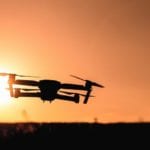
The Intelligence Advanced Research Projects Activity (IARPA) is looking to enhance its facial recognition capabilities. The organization has issued a Request for Information (RFI), asking interested parties to share research and datasets related to biometric recognition and identification at altitude and range (BRIAR).
In more general terms, that means that the IARPA wants to be able to identify people’s faces at long distances, and at sharp overhead angles from cameras placed on drones or on top of buildings. According to IARPA, face biometrics may need to be supplemented with other biometric modalities – including gait, height, and gender recognition – in order to verify someone’s identity in such adverse conditions, but there is currently a shortage of research that examines such possibilities.
IARPA is part of the US Office of the Director of National Intelligence, and specified that any information gathered through the RFI will be used solely for planning purposes. It advised applicants not to submit any classified projects or information, and stressed that the RFI is not a formal solicitation process, so the organization will not be handing out any contracts based on the information it receives.
In that regard, it’s also worth noting that IARPA is asking for summaries about the availability of research and certain data sets. Applicants are not expected to provide the data sets themselves.
This is not the first time IARPA has turned to a wider audience in an effort to improve its facial recognition tech. The organization previously conducted a Face Recognition Prize Challenge and a fusion challenge that asked contestants to blend several facial recognition algorithms. Unlike the latest RFI, those challenges promised cash prizes to the winners. In the meantime, Australian researchers have developed their own long range facial recognition algorithm.
–
September 18, 2019 – by Eric Weiss







Follow Us